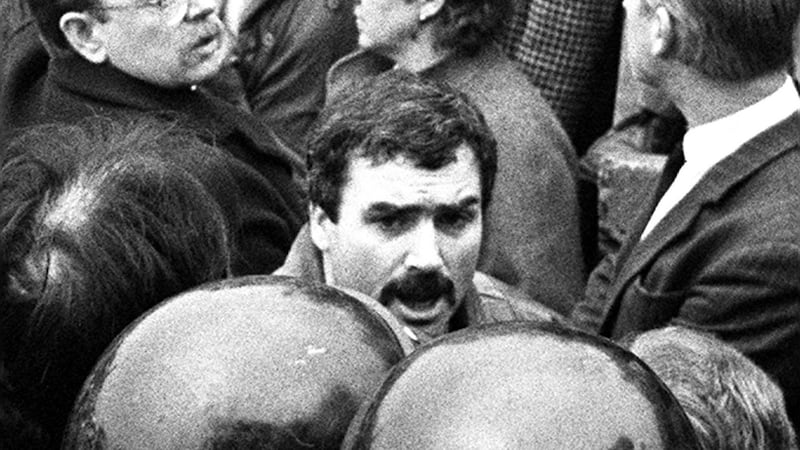A DUP and Ulster Unionist Party pamphlet warning against limiting the days the British union flag should fly over Belfast City Hall had a "catalytic effect" in inflaming loyalist and unionist anger at the time, a new report has found.
The study by academics from Queen’s University, Belfast also reported that 160 PSNI officers were injured over four months of protests, 362 people were charged in connection with the demonstrations and policing the protests cost £21.9 million.
The 145-page report - The Flag Dispute - Anatomy of a Protest - was published on the second anniversary of the protest which erupted on December 3rd 2012 when Sinn Féin, the SDLP and the Alliance Party voted to restrict the number of days the union flag should fly over City Hall from year-round to some 15-17 designated days each year.
The casting votes of Alliance members carried the motion. The report recalls how ahead of that vote, the DUP and the UUP “circulated 40,000 leaflets warning in emotional language that the Alliance Party policy was a threat to unionist identity”.
“There is no doubt that the 40,000 leaflets distributed by the DUP and the UUP had a catalytic effect in the run-up to the City Hall vote. It was this more than anything else which inflamed the mood at that point,” said the academics from Queen’s Institute for the Study of Conflict Transformation and Social Justice.
“Following the first riot however the political parties found the campaign had slipped out of their control, and while they tried to regain the initiative by launching the Unionist Forum, their influence was very limited - indeed, many protesters began to focus their ire on the leaders of mainstream unionism,” they added.
‘Deeply unsettling’
The report, which was funded by the Department of Foreign Affairs and the North’s Community Relations Council, examined how the decision was “deeply unsettling” to unionists and resulted in four months of sustained rioting.
At the height of the dispute just before Christmas 2012 almost 10,000 people were involved in various protesst. The PSNI recorded 2,980 ‘occurrences’ in four months. Of the 362 people charged, 224 were convicted, with 37 receiving custodial sentences, the longest two years.
“The numbers involved in the street protests were only ever a very small percentage of the unionist population,” said the report. “Even in the protest heartland of east Belfast no more than one per cent of the population participated in the demonstrations.
“However there was considerable tacit support: a poll taken in mid-January (2013) showed that despite the violence and the losses to traders, 46 per cent of unionists thought the protests should continue.”
They added that the UDA and the UVF were involved but “ were not executing a plan or controlling the direction of the protest”. Some paramilitaries tried to calm the situation, while others encouraged the protests.
“Mostly it was an unhappy time for both organisations and served to exacerbate existing tensions within their ranks.”
Also involved were “flag provocateurs” operating outside the paramilitary structures who added an “incendiary” element to crowd situations. “They had no central control, rather they were either just firebrand individuals or small clusters of people who travelled from one protest to another, bringing a kinetic energy to crowd situations,” they said.
“In reality it was never a coherent social movement, but rather a mix of people acting on different impulses. The fact that there was no single force in charge of the disorder accounts for why it was so difficult to contain.
"The criminalisation of the protesters, and the threat of a custodial sentence in particular, was a major deterrent and it played a critical part in the waning of the flag protest. This has had knock-on effects in worsening the sense of alienation that some in the community feel towards the institutions of criminal justice in post-Agreement Northern Ireland. "
The academics reported that for some loyalists now “the idea of reconciliation work with nationalists is not even a possibility”. They also noted a general complaint “that political parties, rather than modelling good relations, act to encourage mutual hostilities”.













